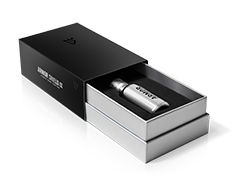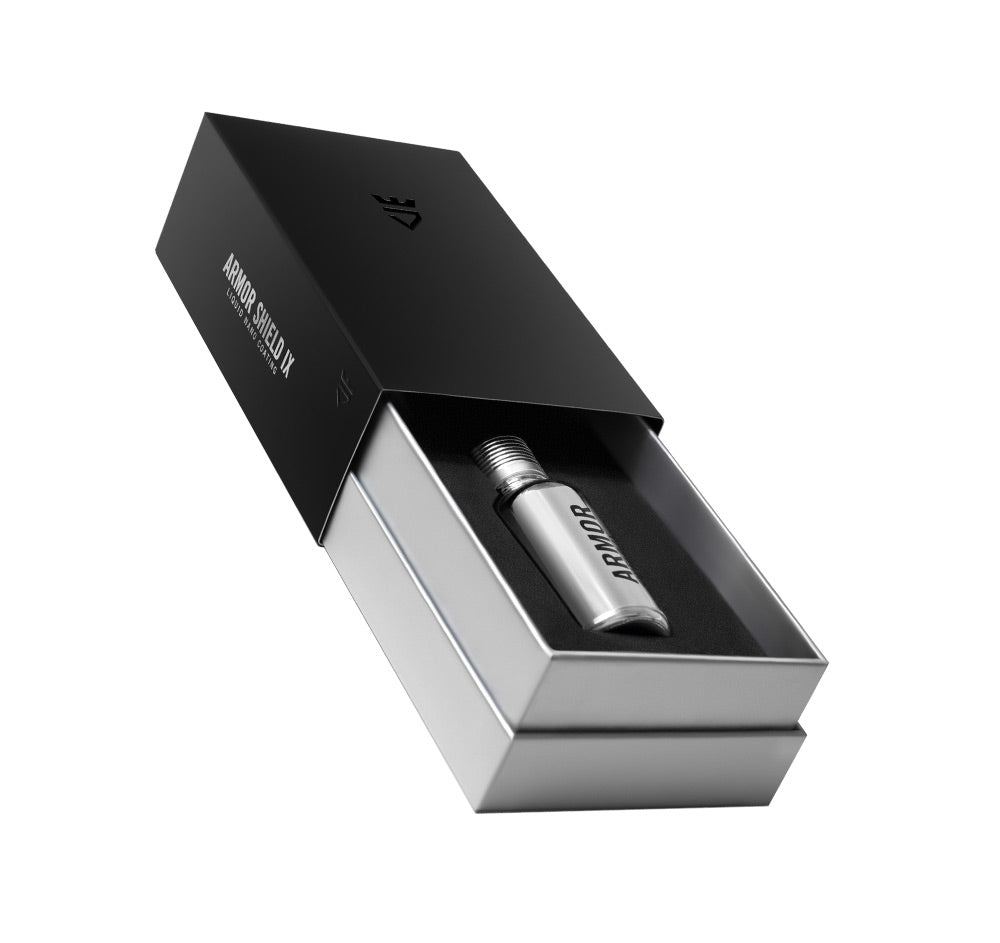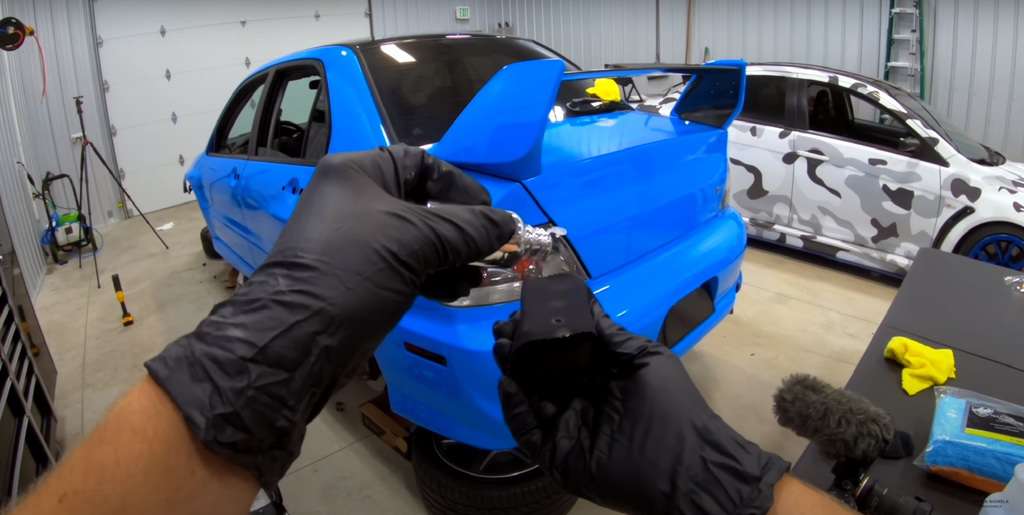Looking to save a few greenbacks on car cleaning costs, but don’t know where to start? Pro detailing shops cost a pretty penny, especially when frequented regularly, the cost of car cleaning chemicals really adds-up quickly, and visiting the commercial car wash down the street is as comforting as getting a back massage from Freddy Krueger. So what do you do? Let that ride reduce to rot?
No need to fret friend. When it comes to car cleaning, there are several ways you can save money, and no, we’re not just talking about diluting down crud-cutting chemicals. Just like household cleaning, every step in the automotive detailing process has its own loopholes and hacks, and today we’ll be going over some of our personal favorites.

Savings at Every Step in the Car Cleaning Process
So if you’re hellbent on keeping the “detail” in the word detailing, and wish to simultaneously cut down on car care costs, we suggest tackling the following portions of the detailing process with any (or all) of these five money saving suggestions.
These processes also helps prevent contaminants from embedding in surfaces, which leads us to one of several maintenance tips that everyone seems to agree upon. The longer you let a contaminant or foreign matter sit on a surface, the greater its chances are of damaging the material it is coming into contact with.
As always, we understand that there are numerous alternatives to every recommendation, so if you have a more cost-effective method in mind, please drop as a note in the comments section below. We get pretty worked-up over new car cleaning hacks and vehicle detailing tips over here at AvalonKing, so keep the suggestions coming!
Undercarriage
Any reputable auto detailing shop will tell you that in order to prevent the spreading of grime to clean portions of the chassis, the car cleaning process should always begin with the undercarriage and wheel wells. These areas really are the filthiest sections of an automobile. This includes all of the hidden areas stuffed beneath the vehicle, like exhaust, suspension arms, axles, undertrays, and more. As for the wheel wells, this portion of the cleaning equation goes beyond just fender liners, and pertains to everything contained therein, including brakes, alloy rollers, suspension components, and tires.
Money Saving Tip #1: Instead of spending the dough on an undercarriage cleaning auto wash, break out that lawn sprinkler, put it into “beast mode,” and then stuff it under the vehicle. After 5 minutes or so, move the sprinkler to another corner of the vehicle, doing one section at a time, until all of the undercarriage has been blasted. Meanwhile, wheel wells and everything they contain can get a blasting with a pressure washer that’s been set to its mildest setting, which should be plenty of power for dislodging the big stuff. Follow this with a wheel approved cleaning brush and the appropriate chemicals and all four corners will be looking squeaky clean for next to nothing.
Paint Care
The paint care process is simple: Clean, correct, and protect. It may seem fairly straightforward on paper, but this is an extremely delicate process. Even a new vehicle with a rock-hard clear coat can have its paint surfaces damaged by an overzealous buffing job or contact with the wrong chemicals.
Properly washing a vehicle with a super soft microfiber wash mitt and an automotive shampoo with a low pH balance is the first step, as it will help keep that clear coat, paint protection film (PPF), or ceramic coating from getting damaged. Once wiped dry with a fresh microfiber cloth, any paint correction needs must either be flagged or attended to, followed by some clay bar action in order to remove any contaminants that may still be embedded. After that, it’s on to polishing/buffing and sealing, either via the use of something like a carnauba wax, a paint protection film, or better yet, a high-grade ceramic coating.
Money Saving Tip #2: The cost of microfiber cloths really adds up once you realize how many are required to properly detail a vehicle. From polishing compound application pads and wash mitts, to extra absorbent drying towels and interior detailing cloths, there is a microfiber product specifically engineered for every step in the automotive detailing process. These things get filthy as all hell too, and once contaminated, should never be reapplied to a surface for fear of dirtying or damaging the area. Instead of buying new towels every time, you can save some serious cash by properly cleaning your microfiber cloths.
Exterior Trim and Glass
From resurfacing headlights and polishing tail lights, to hitting black plastic trim pieces with a luster restoring chemical, there’s a lot to consider with this tedious car detailing step. Grilles need scrubbing with a detailing brush, stainless exhaust tips must be buffed, and all of that glass has to be sprayed, polished, and protected.
Money Saving Tip #3: Most hard water spots on glass can be removed with little more than lemon juice and water. Simply mix the juice of three lemons with a cup of distilled water in a spray bottle and apply to the car’s windshield or water spot splattered window glass. Allow the acidic lemon juice mixture to rest on the glass for a few minutes before wiping it away with a clean cloth, being mindful to not let it hit the car’s paintwork or trim. Repeat this step as often as necessary until the hard water spots are gone, doing one section at a time to avoid creating your own water stains.
Interior Detailing
Interior detailing is pretty much anything inside the cabin, as well as the rear trunk/hatch/cargo space. Everything from carpeting and seating surfaces, to door trim and dashes have to be cleaned, with shampooing and a steam cleaner being the weapons of choice for the fluffy stuff. In addition, plastics, leather, and vinyl materials will receive their own cleaning and nourishing products, which often requires the application of multiple kinds of chemicals in succession.
Money Saving Tip #4: If an unpleasant aroma is still emanating from your automobile’s interior days after a deep clean, you can neutralize the aroma with activated charcoal. Bags of this simple yet effective all-natural product are available online, and are surprisingly inexpensive. These bags can also be easily stowed in places like door pockets and beneath trunk mats, for months of unscented, completely invisible air cleaning.
Engine Bay
An in-depth engine bay cleaning session is not something that is commonly included at the local detailing shop, so you’re going to need to cough-up some extra coin if you want that motor polished. However, certain high-dollar car detailing packages include this often overlooked automotive area free of charge, which may sound great, until you realize that it’s more of a quick rinse than a scrub. Instead of meticulously cleaning every inch of an engine bay, most shops will opt to spray everything under the hood with a degreaser, before rinsing it all away with water. This is like throwing liquid soap all over your body, waiting a few minutes, and then hosing yourself off in the shower with the hope that this will be sufficient.
Money Saving Tip #5: In order to get engine bay show quality shine at an affordable price, you will need to take matters into your own hands, and play mad scientist for a change. In order to create your own natural engine bay degreaser, combine distilled white vinegar with lemon juice, baking soda, and distilled water. Not only does this concoction cut through engine bay grime, but it removes odors, is completely non-toxic, and has been proven to be safe to use on most engine bay surfaces. Oh, and did we mention that this magical elixir costs peanuts to make? If you want to try this potion at home, you can find the recipe here.
Quick Tip: Time is money. Calculate the amount of effort expended maintaining ceramic coating products, and you will find that car wax requires way more maintenance, and is therefore more expensive over time. Ceramic coatings last for years, not months. And maintaining something like Armor Shield IX does not require stripping the surface, nor does it require reapplication. For ceramic coatings, a simple shampoo bath and a quick toweling off is all that is generally needed to retain its luster and protective prowess.

Taking the Car Detailing Service Route
On the other side of the double-yellow car cleaning line, is the automatic car wash. Over the years, people have learned to steer clear of the average automatic carwash business due to the risks these automated machines pose to automobiles. Granted, the technology an materials used has improved drastically over the last few decades, but automatic car washes are still a far cry from being ideal.
Unlike an old fashioned hand wash, the typical commercial car wash is not familiar with the word “gentle.” From each wiper blade arm and headlight, to a car’s paintwork, and the wax resting atop its clear coat, they all get scrubbed with either a filthy wheel brush, or blasted with questionable wash water. As swirl marks become car paint sealant scratches, and a series of hard water spots transforms into a stubborn stain, you suddenly feel the need to check your insurance premium. Choosing to frequent the wrong automatic car wash business has the potential to do more harm than good, and since the average insurance company won’t cover this kind of damage, you will probably find yourself paying out of pocket for all of those paint correction procedures.
If you plan on taking the car detailing service route, you will first want to shop around in order to find a shop with solid reviews that meets your needs. Like restaurants and bars, many car detailing shops offer various “specials” on different days, which depending upon your location, could sway your loyalty toward one car detailing business over all others. We’ve even seen certain detailing shops offer an “early bird special,” so if you have the ability to get your car cleaned on your lunch break, it might be worth scheduling a visit and getting that ride scrubbed while you scarf down a sandwich.
Be forewarned, because for as detail focused and careful as they may be, car detailing services often charge a premium. According to a report by Carfax, the average, entry-level exterior auto detailing job on a coupe or sedan typically runs in the $125-200 range, with larger vehicles like trucks and SUVs costing quite a bit more.
Add interior cleaning, paint correction, ceramic coating installation, carnauba wax application, or anything having to do with allergen removal or deep cleaning, and the price of that car detailing package is going to skyrocket. From the chrome on the hood ornament, to the tips of the tailpipe, and everything in between, a full car detailing service should cover every square centimeter of an automobile.
This labor is not only extremely intensive and time consuming , but pricey as well, due in part to the materials needed to complete said process, and the shop’s desire to recoup the cost of the tools used. Naturally, opting to forgo the professional treatment entirely, and taking the DIY route would seem like the most obvious way of saving some dough. But you would need to obtain the previously mentioned specialty auto detailing tools, as well as the necessary car cleaning and protecting products for every imaginable automotive material. Oh, and you would need to set aside some time for completing this labor-intensive process. LOTS of time.

Does Regular Maintenance Actually Reduce Car Cleaning Costs?
Long before the whole, “COVID-19 cleaning craze,” and this pandemic’s proliferation, automotive detailing was far more of an appearance and paint protective process. Sure, disinfecting door handles and shift knobs is a good thing to do, even without a damn pandemic, but what about your vehicle’s health?
Maintaining a clean automobile requires going beyond the whole “disinfect and forget” phase of vehicle detailing. Although it may not lower your car insurance rates, a regular cleaning may help reduce future maintenance costs by exposing potential issues.
However, we also understand that most people are too busy to conduct a full car detailing every week. This is precisely why products like paint protection film (PPF), ceramic coatings, and clear bras have developed such a devout fanbase. Having a transparent, expendable outer layer that both deflects and protects will guarantee that plastic trim, glass, headlight, clear coat, and paintwork gets the royal guard it deserves. When properly installed and maintained, all of these products will also make car cleaning all that much easier on detailing day.
From maintaining a clean windshield and properly ceramic coating a vehicle’s exterior, to removing odors from the interior and scrubbing down the engine bay, the list of preventative maintenance needs is lengthy to say the least. Hell, just keeping the shiny side clear of bug guts, road salt and tar, and all other manner of gunk, makes routine surface care an exhaustive undertaking.
But if you don’t like the idea of birds using your clear coat as a toilet bowl, and their excrement permanently etching into your car’s paint, it’s high time you took the plunge, and began a weekly car detailing campaign. If done in stages, and conducted at home, that vehicle of yours can look, smell, and feel fantastic, all for far less than you might think.












